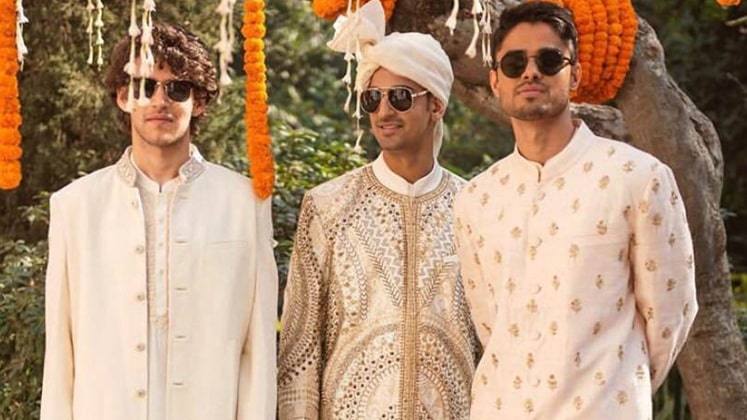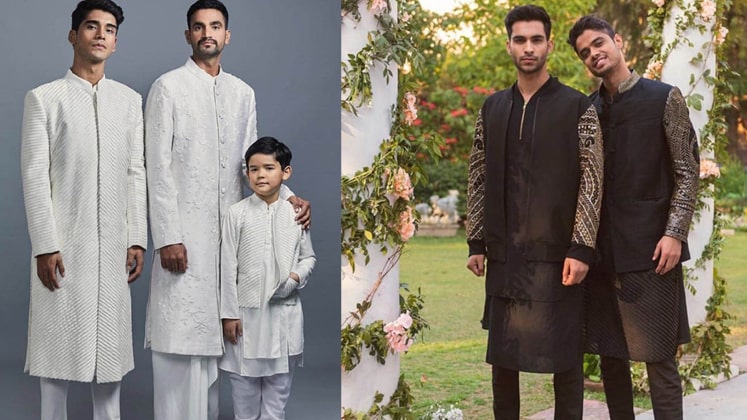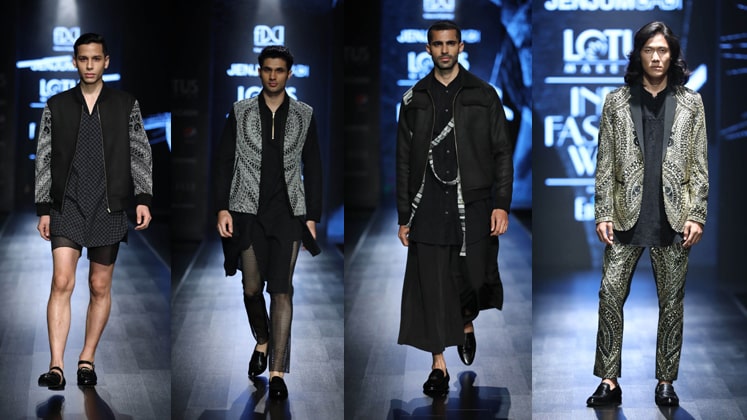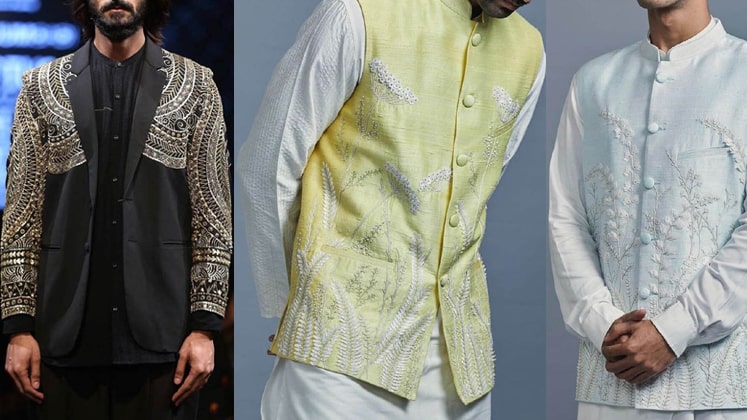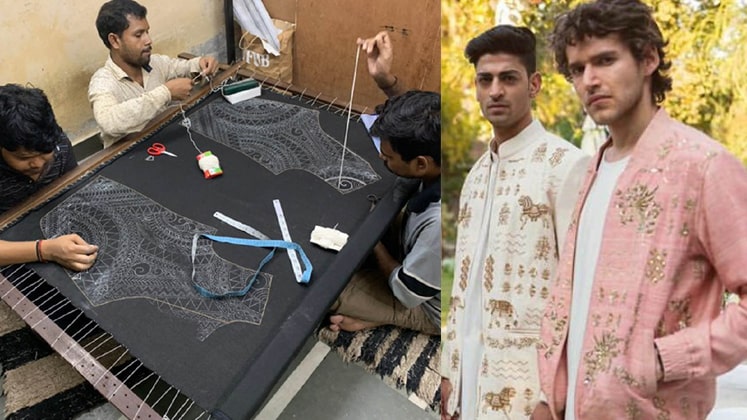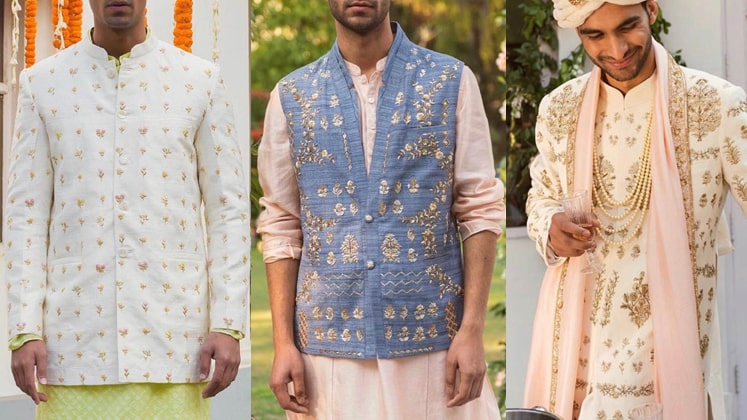Originating from a small town called Tirbin in Arunachal Pradesh, a young boy full of creativity and zest had no idea that he would one day turn out to be the first-ever fashion designer representing his state.
A rage at recent fashion weeks and amongst the top favourite on every fashion buyer’s top 5 list, Jenjum Gadi’s eponymous label is known for its young and fresh designs that highlight tribal colours, motifs, art and culture.
Jenjum was first spotted by veteran designer Rohit Bal, who got so inspired by his graduation collection in college that he offered him a job!
Growing up, Jenjum Gadi was always inclined towards creative pursuits, but never really thought of becoming a designer. His only window to the world of fashion back then used to be the glossy pages of Femina magazines which used to come every 3-4 months.
“At some point in my school days, I came to know about a profession called fashion designing, but I had no clue how one becomes a fashion designer. There was no source of information,” Jenjum Gadi told Apparel Resources in an exclusive interview. He further stated, “Only while doing my graduation at Delhi University, did I come to know about various fashion colleges and how to go about securing an admission there. Since then, it’s been a roller-coaster ride!”
Also Read: Rahul Mishra on championing Indian crafts, sustainable business practices, and ethical fashion
The onset
The idea of starting his own label struck Jenjum while he was still at college – a journey that has been equal parts challenging as it has been inspiring. After working with Rohit Bal for a year, Jenjum ventured into the fashion industry by launching his first label Koga, in 2008, in collaboration with his college friend Jasleen.
“In 2013, Jasleen and I parted ways as she went on to join her family business of wedding decor and catering which led me to launch a label under my own name – Jenjum Gadi.” Initially a womenswear label, Jenjum Gadi tried to cater to a heavily overcrowded market that lacked substance and originality – this led Jenjum to take a step back to revaluate his choices and take a sabbatical from designing in 2015.
“Nothing was inspiring me, so I took one year sabbatical from designing and went back to Arunachal Pradesh to figure out what I wanted to do next,” Jenjum explained, adding, “And in that one year, I realised that there’s only one thing that I can do and that is designing clothes.”
So he packed his bags and made the big shift to New Delhi in 2017 to start designing again, but this time, he wanted to do something that filled a gap in the market but still had a profound essence of his own self. “I started off by designing the kind of clothes I would like to wear myself and got into menswear,” Jenjum corroborated, further stating, “I also wanted to do conscious fashion, so I started looking for handloom fabrics to use within my collections.”
Product categories and pricing
Today, Jenjum is breaking the stereotype by catering to men and highlighting a hidden gem of a culturally rich region within his designs. The label is known for its unisex layered kurtas, bandis and sherwanis which, more often than not, have an unusual twist attached. Priced between Rs. 9,000 and going up to Rs. 50,000, Jenjum Gadi is known for its young and fresh designs that highlight tribal colours, motifs, art, and culture. Jenjum’s work showcases lots of streetwear style silhouettes which he tries to infuse within Indian festivewear to keep the ethos alive. The label caters to the booming market of Indian festivewear and contemporary Indian wear which fuses western and Indian sensibilities together.
Made using 60 per cent handloom fabrics, Jenjum Gadi collections utilise versatile materials which can be worn on multiple occasions and are gender-neutral in characteristic.
Also Read: Amaare: Rethinking Indian menswear with a focus on ethical fashion
Brand USP and aesthetics
“Consciously or unconsciously when I design, my tribal culture and heritage always slip into my designing process. I realise now that when one grows up with such beautiful heritage surrounding them, it is bound to leave an impact on their mind,” Jenjum said, adding, “But at the same time, it is important to strike a balance. If I go totally tribal in designs, that might not work for the main line of Indian festive clothing, so I like mixing my designs with various other elements of design which lead to an end result that is something new yet cohesive with Indian festivewear.”
Jenjum Gadi’s USP lies in mixing and sprucing things up. The designer likes to think of his clothes as a collage of sorts – rather than using only one fabric, he mixes different kinds of materials and embroidery techniques such as aari and zardozi together create a standout look. “Our USP lies in mixing different elements together, be it motifs, prints, fabrics, etc. For example, if I am choosing a motif for embroidery, instead of going for one kind of motif, I prefer to take motifs from different places,” Jenjum said, further adding, “For our recent collection, I have fused tribal and Mughal motifs together.”
Collection planning and buying-sourcing
Based on a collection module of majorly Autumn/Winter and Spring/Summer, Jenjum Gadi also does occasional limited edition drops/small capsules collections for their stores and online platforms based on their main collections. They usually replenish their store stock 2-3 times in a season and online around 1-2 times per season.
In order to ensure and control quality, all of Jenjum Gadi’s collections are designed and manufactured in-house.
The label sources its sustainable fabrics from various textile exhibitions that allow one to meet the weavers directly without any middle-man being involved. Jenjum also regularly works with Andhra cotton and silk from Bihar and Assam. The designer has also recently started exploring loin loom textile from Nagaland and Arunachal Pradesh, which he plans to incorporate into his collections further post-pandemic.
“I have worked with loin loom weavers from Nagaland and Arunachal and I feel that there is scarce awareness about loin loom textile. I want to bring loin loom textile into mainstream fashion,” Jenjum stated.
Today’s Indian men are more conscious and experimental when it comes to dressing up. They want to try something new and they want to look different from others, yet look like a part of the pack. This is something Jenjum Gadi – the label’s aesthetic fits into.
Available in India across mostly all menswear multi-designer stores, Jenjum Gadi will be going online internationally via Tata Cliq, dapperonline, and pitraonline among others.
Also Read: Keeping the hopes high amidst COVID-19: Yash Dongre


